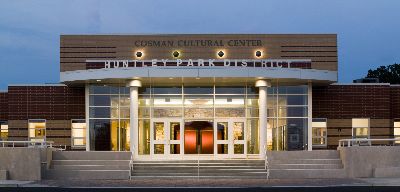Should You Start Your Construction in the Winter, or Wait?
With the midwest winter rearing its ugly head, companies all around are considering the same question that comes up year after year—start your construction project now in the cold, or wait for the big thaw? In the midwest, we are usually able to work through 2.5 out of the three harshest months of winter. We spoke with Greg Bohlin, Vice President of Construction at Lamp, to better understand how companies can make the best decision about whether to begin construction in the winter.
Here are a few items to think about when deciding on winter construction:
• Consider the timeline with revenue potential. If you are a manufacturer or are building a commercial business, it is important to consider the benefits of completing the project sooner. If you have income potential and could begin earning money in a space sooner, it usually makes more sense to construct through the winter. Also, if you are a commercial business working on an upgrade or expansion, you will not miss revenue during the winter months, since you can continue to operate out of your existing building.
• Time sensitive projects. Even in a situation where revenue is not a driving factor, for example a school, deadlines are extremely important. 95% of schools have to be completed by the first part of August or else there is no place to put the students. Whether this is a classroom or a dorm, this can pose a costly situation. Though the space itself does not create money, it will cost you extra money to place them elsewhere while the project is being completed.
• Labor costs increase June 1. Currently, the prime building months are April through October. On June 1st, wages increase. Union rates are increased during these summer, meaning higher labor rates right in the middle of the prime construction season. This makes it important to hit deadlines that come just before June 1. While the winter months can’t operate at full-efficiency, it does take chunks out of the construction process which help to move the project along in its timeline.
• Tools make winter weather construction viable. At Lamp, we are very familiar with working construction during a midwest winter. Tools make it possible to move forward with construction whenever possible. We own a ground thawing machine (and are one of the few places to own one—many other places have to rent one when it is needed). This allows us to excavate in the winter. We also use blankets and the ground thawing machine to keep poured concrete from freezing before it cures. (If concrete freezes during the curing process, it often has to be removed and re-poured.) We also use temporary heaters for internal construction work when the HVAC isn’t installed yet. In addition we use tents on scaffolds, install visqueen over window openings, install temporary roofs, and install temporary doors to enclose the building to keep work progressing.
* Talk to a construction expert. While you may not have the tools and knowledge available to assess whether you should start your project, we certainly do. You know your business and earning potential, and we can look at your project to help you consider the timeline and weigh the costs and benefits of starting now.
Would you like to talk to someone about whether you should begin your construction project? Contact Lamp today.





